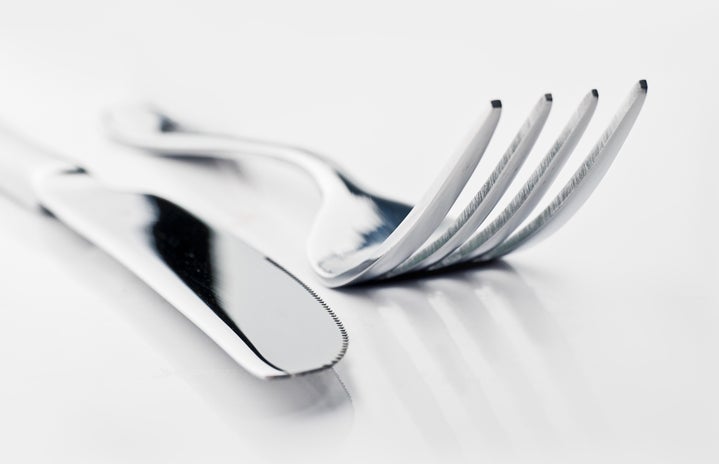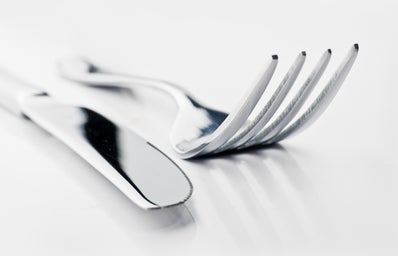Decades before pilgrims sailed to what is now the United States, Filipinos landed on the continent. They traveled by Spanish ship and docked in current day Morro Bay, California — a state where 1.6 million Filipinos now live. This first documented arrival, on October 18, 1587, is now commemorated during October, officially recognized by Congress as Filipino American History Month.
A major part of Filipino heritage is food.
As Kaye Banez puts it, “There is no Filipino gathering, big or small, where food does not play a starring role.” It is common to use the phrase “Have you eaten yet?” — “Kumain ka na?” in tagalog — as a greeting and is often used in place of “How are you?”
Food has shaped the way Filipinos live, so it’s no surprise that as people immigrated from the Philippines to the US in the centuries following that first arrival in 1587, they brought their food with them. Now, with over 4.2 million Filipino Americans in the US , you can find Filipino restaurants in almost every major US city. DC is no exception.
As someone who grew up with a Filipina mom who made amazing Filipino food, her home cooked meals are one of the things I miss most when I come back to DC for school. So I decided to spend my Filipino American History Month discovering new restaurants to kill two birds with one stone: finding great meals while also celebrating my Filipino culture. Here are the restaurants I discovered:
1. Purple Patch
Location: Mount Pleasant
Owner and Chef: Patrice Cleary
Patrice Cleary, half-Filipina on her maternal side, was born in the Philippines but moved to the United States when she was still a baby. Making food was the way Patrice’s mom held onto her Filipino identity, and cooking soon became Patrice’s outlet as well. Patrice and her husband made the decision to open the restaurant in 2015 and it is now a popular spot for both brunch and dinner, serving traditional Filipino classics with an American twist.
As the Purple Patch website explains, Patrice has “dedicated most of the menu to her mother’s recipes and Filipino cuisine.” One such family recipe is used to make what is aptly listed on the menu as Mama Alice’s Lumpia — a Filipino-style egg roll filled with pork and an assortment of vegetables.
In an article from the Washington City Paper it was explained that since the opening of the restaurant Patrice’s mother Alice would make and roll about 1,000 pieces of lumpia every week from her home in Corpus Christi, Texas, and ship them overnight to the restaurant to be fried in-house. As someone whose mom spends hours hand rolling lumpia to freeze and refry later, this attention to detail and dedication to serve authentic Filipino food is what makes the 30 minute bus ride from Tenley to Mount Pleasant worth it.
2. Bad Saint
Location: Columbia Heights
Original Chef: Tom Cunanan
Bad Saint is often credited with putting Filipino food on the map in DC and was titled Bon Appetit’s No. 2 best restaurant of 2016. For the often named most popular Filipino restaurant in the country, it is quite small. It only seats 24 and the wait time was once hours long, but due to COVID, Bad Saint now only offers takeout and delivery. Their hours of operation are fluid, so make sure to check out their information page before heading over.
The original head chef, Tom Cunanan, was given the James Beard Award for Best Chef in 2019 during his time at the restaurant. Like Patrice Cleary, Cunanan was born in the Philippines but moved to the United States as a child. According to his StarChefs bio, before Tom’s mother passed away, “he worked with her to carefully document all of her original recipes from the Philippines.” This became the influence for what later became Bad Saints.
As Jessica Sidman reports, the restaurant “gets its name from St. Malo, La., a long-destroyed coastal fishing village which was the first permanent Filipino settlement in what is now the U.S.” I plan on celebrating those early Filipino immigrants this October, which includes a trip to this Columbia Heights hole-in-the-wall.
3. Pogiboy
Location: Downtown
Owners and chefs: Tom Cunanan and Paolo Dungca
When Tom Cunanan stepped down after five years as head Chef at Bad Saint, he wanted to start a Filipino restaurant of his own. As a result, he and fellow Filipino-American chef, Paolo Dungca, opened their new “fast-casual” Filipino-American food stall. An homage to Jollibee, a famous Filipino chicken chain, the stall “eccentrically blend[s] Filipino and American fast-food traditions” to create unique recipes such as Pogi Burgers on ube bao buns or T-bone steak chimichurri fries.
Joseph Hernandez perfectly describes the meaning of the term Pogiboy: “a term of endearment which aunties from all walks of life generously shower upon pretty much every Filipino boy.” Translating to “handsome” or “cute boy” in Tagalog, Pogiboy captures the “playful and energetic” vibe that the owners were looking for. The name reminds me of my brother, one of said Filipino boys showered in “pogi” and “gwapo,” so I am excited to bring him here when he visits DC.
Location: online only
Owners and chefs: Cliff Wharton
Translating to mean “drunken pig,” Lasing na Baboy is one of many new “ghost restaurants.” These restaurants operate without a brick and mortar storefront and grew in popularity during the pandemic. Lasing na Baboy, as a delivery-only business, is based in the hotel kitchen of the Tabard Inn and relies on apps such as UberEats, DoorDash, and GrubHub to function. The mind behind Lasing na Baboy is chef Cliff Wharton who, like Cleary and Cunanan, was born in the Philippines but moved to the States as a toddler.
The short menu includes four entrees and five sides, making it easy to choose one of Wharton’s Filipino comfort foods. Each entree is served with baby bok choy and mushrooms, garlic rice, lumpia, and bibingka (baked rice cake) to make what Laura Hayes calls a “Filipino bento box.” The variety gives customers the opportunity to try a little bit of everything. With EagleBucks linked to GrubHub, I can definitely see a chicken adobo and garlic rice comfort meal in my near future.
Though this list is DC-specific, there are many more Filipino restaurants and markets in the surrounding DMV area, such as Kuya Ja’s Lechon Belly and Gwenies Pastries, which are run by the Maryland brother-sister duo, Javier and Stella Fernandez. I’m lucky enough to have Filipino cuisine in my life, so I hope that this month, and every month, AU students can get a taste of what I think is the best food in the world.


